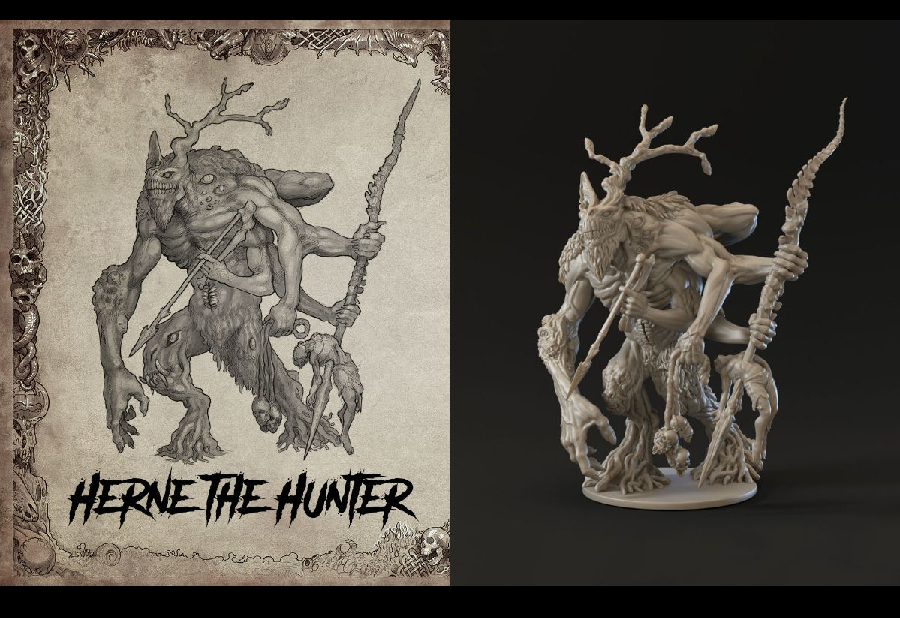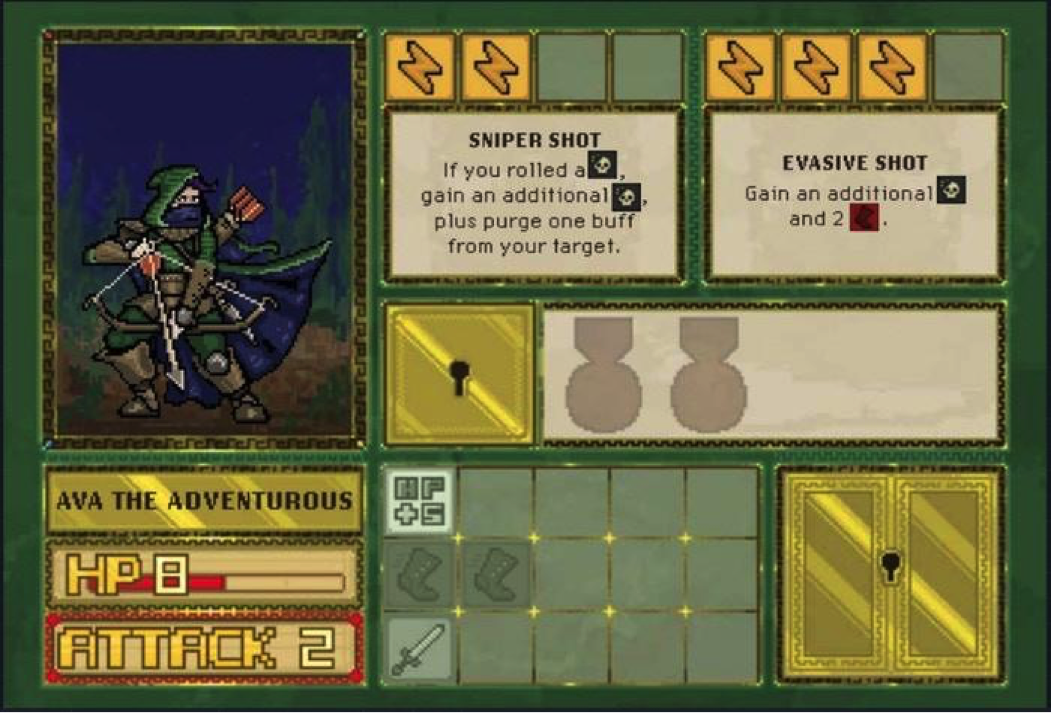
Cthulhu Wars Duel
Back in 2013 when I first launched the campaign for Cthulhu Wars, the single most-heard comments were “why is it so big?” “why not use cheap meeples?” “why can’t I play it 2 player?” “can you make a travel version?” I had just done my absolute dream game. It was so popular and had such strong reviews that naturally those who couldn’t afford the price tag wanted me to do a less expensive version. I resisted – in my opinion, one important reason Cthulhu Wars was such a success was BECAUSE of its size and impact, not in spite of it.
The two-player fans were easier to ignore; Cthulhu Wars is emphatically a multiplayer game, and its interactions are seriously distorted in two player mode. We tried it several times, but it lacked the “mouth feel” of Cthulhu Wars, and left us cold. “Combat” factions, such as Cthulhu, dominated “Infrastructure” factions, such as Black Goat.
So we moved on and basically forgot about it. Then came 2018. In our Planet Apocalypse campaign we’d included a “super-pledge” which we internally called the Masterminds. Those who backed it got to come to my house for a weekend; play unpublished games, hang out, get design practicums, and so forth. Well in September the Masterminds showed up. We had 5 superfans on hand, all of whom loved my games, and so I decided to use them for my own dark purposes.
No, I didn’t sacrifice them to Yog-Sothoth – I sat them down with my assistant game designer, Lincoln P., and we forced them to work on a two-player version of Cthulhu Wars hot and heavy. It’s not all they did – we had plenty of other frolics going on – but it had the most lasting result. uring the course of the weekend, and lots of plays, we worked out what was needed. A few rules changes ensured that the game was still fun but was absolutely balanced.
The Decay Marker
One of the major strategic elements of Cthulhu Wars is to try to run out of Power last, so you get the last few turns without interruption. In multiplayer, this was a fine aspect to the game – usually the end player didn’t have too many turns in a row, and if he did, he would “spread the love” among all his enemies. But in a two player game, this game element was problematic. With only one target, even just 3-4 turns in a row could nearly destroy a victim and ruin the game.
To fix this problem, we added the Decay marker to the game – now if you run out of Power first, the other player has to pay an ever-rising “Power Tax” each time he takes an extra turn. This has two effects. First, it means he does not want to draw out the turn – paying the Power Tax multiple times is painful. Second, it means players feel rewarded for going out first – the complete opposite of the “real” Cthulhu Wars experience. It’s different, but it’s super fun.
Doom Kill
Also, in Cthulhu Wars you are not directly rewarded for combat. I mean it’s its own reward to an extent – by battling you can move an enemy out of a desirable area, eliminate cultists, and many factions require combat to achieve spellbooks. The main controlling limiter to combat is that both players get units lost and/or scattered, which means in a multiplayer game, if you fight too much a third party will take advantage of your weakness. Nobody’s got time for that. But in a two player game, this weakness vanishes – which is why Cthulhu was so dominant against Black Goat in our original 2 player games. Sure Cthulhu still loses units when he fights, but he’s never “weak” with respect to the enemy because he generally inflicts more losses than he takes. Combat is win-win for Cthulhu and other combat factions such as Windwalker. But we didn’t want all of the 2 player games to be combat-heavy matchups. We wanted ALL the factions to be fun. And a faction that inflicts its damage by capturing (Sleeper) or nuking units from a distance (Black Goat, Opener) was just plain disadvantaged.
So we added a new rule –for every kill you inflict on an enemy, you earn Doom! Suddenly you are scoring points directly every time you use one of those weird special abilities. Cthulhu is still a battle titan – but now Black Goat’s Ghroth spellbook, formerly obscure and little-used, becomes a devastating source of victory points. When Sleeper goes on a capturing rampage, instead of just earning Power, he also is gathering Doom, so even the least-battle-oriented civ suddenly becomes interesting.
To balance this bigger Doom bonanza we changed the Doom phase such that you don’t get Doom simply for controlling Gates. You must not only control a gate but also perform a Ritual of Annihilation.
Collect Them All?
In Cthulhu Wars you can’t win the game unless you have 6 Spellbooks. This was awkward in the 2 player game, because a lot of the Spellbooks require actions from the other players. In a multiplayer game it’s not an issue, because someone always fuilfills the task. But in two player this is not the case. Take Windwalker for instance –one of his spellbook requirements is “another player has 6 spellbooks”. Well if his opponent is a dog in the manger, he could refuse to take his last spellbook, thus preventing Windwalker from ever winning. That sucked.
Our solution was quite simple – we removed the 6 spellbook rule. Now you didn’t HAVE to get all the Spellbooks to win. This had the unexpected side effect of making Spellbooks easier to get – now that you couldn’t actually keep your enemy from winning by holding out, players were actually much likelier to take actions that might score you a book, because it was no longer such a constraint. So the game became more fun AND more balanced.
Creating Cthulhu Wars Duel
We trimmed a bunch of other tidbits, made sure that all spellbooks made sense in two player, etc. In the end we had a good two player game. But it wasn’t exactly Cthulhu Wars. We had these niggly rules that weren’t in the base game (Decay, Doom for Kills, etc.) that players had to remember. It felt … clumsy.
So last year I was pondering whither the two player version of Doom and it came to me like a thunderbolt. THIS could be the “smaller” Cthulhu Wars so many people desired! With a new rulebook incorporating all the old 2 player changes it would now be a game in its own right. Not a competitor or replacement to the “old” Cthulhu Wars, but a peer, to stand alongside.
How to do it? Well first off, I decided it wouldn’t have ANY figures – this was to be an inexpensive, easily-transportable version of the game. But I still liked the panoply of the big figures, so we went for cardboard standees. This way we had big, full-color units, but not hard to transport or print.
Next, we made the board smaller. Now that we were using standees instead of 3-d figures with bases as wide as 100mm across, it was plausible. In doing this I went ahead and created a wholly new map for the game, too. Well I say “wholly new” but really it’s a simple variation on the tried-and-true Earth map.
Third we only needed two factions – it’s a two player game after all. Cthulhu and Black Goat were now super-fun to play against each other, and felt utterly different, so they made the cut.
What next?
We only did two factions so far, so our current plan is to release the other factions in new boxes – each its own complete, fully-playable, affordable game with its own unique map. Of course though the factions and maps will come in different boxes you can mix and match them as you please. But only two players at a time!
It’s gone full circle in a sense. Some fans have asked for a multiplayer version, or even about having figures. But the way I see it, I’ve already designed that game.












